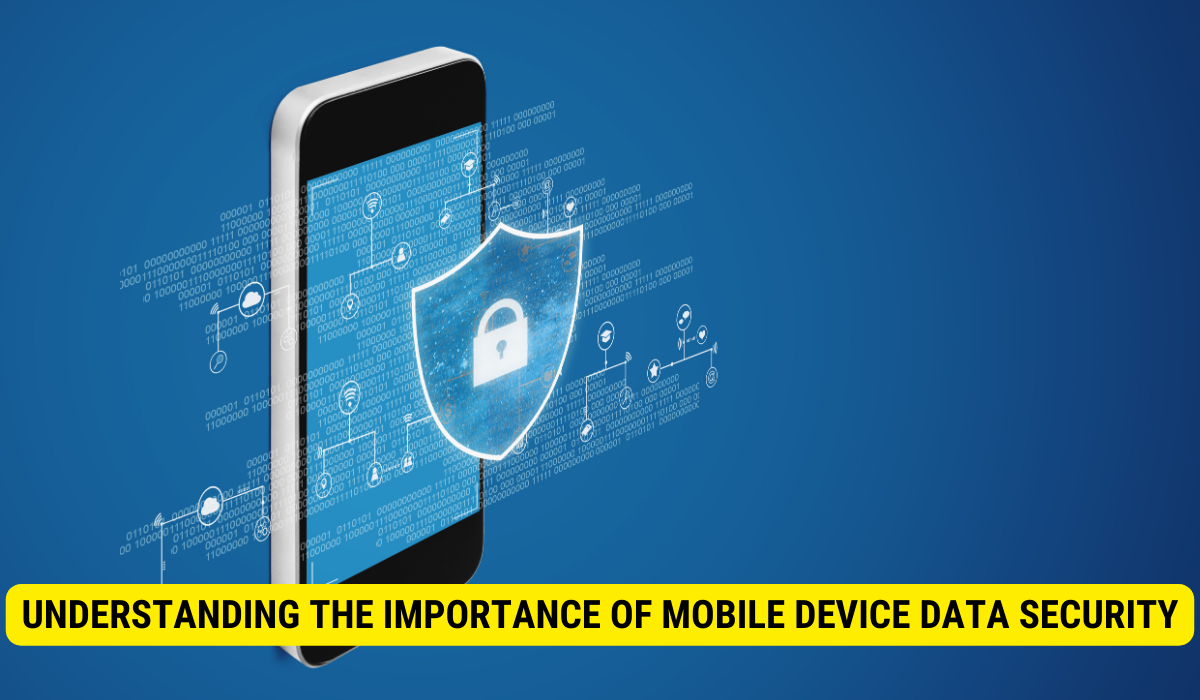
To secure company mobile device data, businesses must understand the significance of mobile device data security and implement measures such as Mobile Device Management (MDM) solutions, regular updates and patches, and comprehensive employee training to ensure data protection and minimize risks.
Securing company mobile device data is paramount in today’s modern business landscape. With the growing reliance on mobile devices for day-to-day operations, businesses must understand the risks associated with unsecured mobile device data and take proactive measures to protect sensitive information. I will explore into the various aspects of mobile device data security, providing insights on the risks involved, the role of mobile devices in business operations, and effective strategies for securing company mobile device data.
Understanding the Importance of Mobile Device Data Security
In today’s digital age, the rank of mobile device data security cannot be overstated. As businesses gradually rely on mobile devices for communication, productivity, and access to valuable information, protecting this data from malicious actors becomes paramount.
Mobile devices serve as repositories for a wide range of business information, from sensitive customer data to confidential financial records. This treasure trove of information makes them an attractive target for cybercriminals seeking to exploit susceptibilities and gain unauthorized access.
Failure to safeguard mobile device data can have severe consequences for businesses. Financial loss, reputational damage, and legal liabilities are just a few potential outcomes of a data breach. Therefore, businesses must recognize the significance of mobile device data security and prioritize it.
The Risks of Unsecured Mobile Device Data
The risks associated with unsecured mobile device data are numerous and can have far-reaching implications. One of the biggest risks is the potential for data breaches. If a mobile device falls into the wrong hands, unauthorized access to sensitive information becomes a reality. This can lead to identity theft, financial fraud, and other cybercrimes.
Another risk is the loss or theft of mobile devices themselves. With the increasing mobility of workforces, the chances of devices being misplaced or stolen are higher than ever. Without proper security measures, this can result in unauthorized access to company data if the device is not properly protected.
Unsecured mobile devices can also open businesses to malware and other malicious attacks. From phishing attempts to malware-infected applications, mobile devices can become vulnerable entry points for cybercriminals seeking to exploit vulnerabilities in a company’s network. This can lead to data loss, system cooperation, and significant business disruption.
Businesses need to understand these risks and take proactive measures to mitigate them. Implementing strong security protocols, such as encryption, multi-factor authentication, and remote wipe capabilities, can help protect mobile device data and minimize the potential impact of a security breach.
The Role of Mobile Devices in Modern Business Operations
Rapid technological advancement has made mobile devices indispensable for modern business operations. From smartphones to tablets, these devices enable employees to work remotely, access business applications, and communicate with colleagues and clients.
This mobility and flexibility bring numerous benefits to businesses, including increased productivity and efficiency. However, they also introduce security challenges. Mobile devices are often used outside the secure confines of the office network, making them more susceptible to security threats.
As such, businesses must acknowledge the significant role that mobile devices play in their operations and take steps to secure them effectively. This includes implementing strong security measures, providing employee training on best practices for mobile device security, and regularly updating software and applications to patch vulnerabilities.
By prioritizing mobile device data security, businesses can ensure their valuable information’s confidentiality, integrity, and availability. This protects the company’s interests and instills confidence in customers, partners, and stakeholders.
Implementing Mobile Device Management (MDM) Solutions
One of the most effective strategies for securing company mobile device data is implementing Mobile Device Management (MDM) solutions. MDM solutions offer a comprehensive set of tools and policies that enable businesses to achieve and secure their fleet of mobile devices.
Key Features of MDM Solutions
MDM solutions typically offer a range of features that help organizations enforce security measures and maintain control over mobile devices. These features include device encryption, remote wipe capabilities, and secure application distribution.
Device encryption ensures that data stored on mobile devices remains secure, even if the device falls into the wrong hands. This technology encrypts data at rest, making it unreadable without the appropriate decryption key.
Remote wipe capabilities allow businesses to erase data on a lost or stolen device remotely. This ensures that sensitive information does not end up in unauthorized hands and reduces the risk of data breaches.
Secure application distribution allows organizations to control and manage the installation of applications on mobile devices. This ensures that only approved and vetted applications are allowed, reducing the risk of malware infections.
Selecting the Right MDM Solution for Your Business
When selecting an MDM solution for your business, it is important to consider your specific requirements and requirements. Not all solutions are created equal, and what works for one organization may not work for another.
Start by evaluating the size and complexity of your mobile device fleet. Consider the types of devices you use, the operating systems they run, and the specific features and functionalities you require.
It is also important to consider the scalability and flexibility of the MDM solution. Your mobile device management needs may change as your business grows and evolves. Ensure the chosen solution can adapt to your requirements and integrate seamlessly with existing IT infrastructure.
Establishing a Mobile Device Security Policy
Executing security policies is a crucial step in securing company mobile device data. A well-defined mobile device security policy sets clear guidelines and expectations for employees’ use of mobile devices in the organization.
Essential Elements of a Mobile Device Security Policy
When creating a mobile device security policy, businesses should consider several essential elements. Firstly, define acceptable use guidelines to establish what employees can and cannot do with their mobile devices.
Include policies on password requirements, device encryption, and using personal devices for work purposes. Specify which applications are allowed on company devices and establish software updates and patch protocols.
Furthermore, it is vital to outline the procedures for reporting lost or stolen devices and provide instructions on handling security incidents. By clearly communicating these guidelines, businesses can mitigate the risk of data breaches and illegal access to company information.
Enforcing Compliance with the Security Policy
Having a security policy is not enough. It is equally important to enforce compliance with the established guidelines. This can be attained through regular audits and employee training programs.
Assign a dedicated team or individual responsible for monitoring and enforcing mobile device security policy compliance. Conduct regular audits to ensure devices are properly configured and updated with the newest security patches.
Additionally, provide ongoing training and education to employees on the position of mobile device security and their role in protecting company data. Emphasize the potential consequences of non-compliance and empower employees to contribute to the overall security efforts actively.
Training Employees on Mobile Device Security
Employee drill is a vital component of any mobile device security strategy. While technological solutions play an important role, workers are often the weakest link in an administration’s security defenses.
Why Employee Training is Crucial

Employees must be educated about the risks associated with mobile device use, including the consequences of data breaches and the importance of following security protocols.
Employees may inadvertently engage in risky behaviors without training, such as downloading untrusted apps or connecting to unsecured Wi-Fi networks. By providing training, organizations can empower employees to make informed decisions and act as the first defense against mobile device-related security threats.
Best Practices for Mobile Device Security Training
When conducting mobile device security training, adopting best practices that maximize effectiveness and engagement is essential. Use interactive training methods like simulations or gamified learning experiences to keep employees engaged and promote knowledge retention.
Focus on real-world scenarios and provide practical tips for identifying and mitigating mobile device security risks. Cover topics such as phishing attacks, secure use of public Wi-Fi networks, and the importance of strong passwords.
Reinforce training through regular reminders, communication channels, and ongoing reinforcement sessions. This ensures that employees remain vigilant and up-to-date with the latest mobile device security practices.
Regularly Updating and Patching Mobile Devices
Regularly updating and patching mobile devices is critical to securing company mobile device data. New vulnerabilities are constantly being discovered, making it essential to keep devices up to date with the latest security patches.
The Importance of Regular Updates
Operating system and application updates often include critical security fixes that address known vulnerabilities. Failing to update devices on time leaves them open to exploitation by cybercriminals.
By regularly updating mobile devices, businesses can reduce the risk of successful attacks and ensure that devices are prepared with the latest security features and protections.
Patch Management for Mobile Devices
Managing patches for mobile devices can be challenging, especially in organizations with a large fleet of devices. However, implementing a comprehensive patch management strategy is crucial for maintaining the security of company mobile device data.
Consider using automated patch management tools to streamline the process and ensure timely updates across all devices. Regularly monitor and test devices for compliance and address any vulnerabilities promptly.
Furthermore, establish clear procedures for handling emergency patches that address critical vulnerabilities. Time is of the essence when addressing security flaws, and a well-defined process ensures that patches are deployed as efficiently as possible.
Key Takeaways
- Mobile devices hold vast amounts of sensitive business information, making them prime targets for cyber threats.
- Implementing MDM solutions helps businesses manage device encryption, remote wipe capabilities, and secure application distribution.
- Regularly updating and patching mobile devices is critical to address vulnerabilities and provide the latest security features.
- Employee training on mobile device security ensures they understand risks and follow best practices.
- Establishing a clear mobile device security policy, defining acceptable use, and ensuring compliance protects the company’s data integrity.
FAQs
Why is securing company mobile device data crucial?
Securing company mobile device data protects sensitive business information from unauthorized access, cyber-attacks, and potential data breaches.
What is Mobile Device Management (MDM)?
MDM is a solution offering tools and policies that allow businesses to manage and secure their mobile devices effectively.
How do updates and patches contribute to mobile device security?
Regular updates and patches address known vulnerabilities, ensuring devices have the latest security enhancements to counter threats.
Why is employee training necessary for mobile device data security?
Employees are often the first line of defense. Training equips them with knowledge to avoid risky behaviors and recognize potential threats.
How can businesses enforce mobile device security policies?
Businesses can ensure compliance with established security protocols through regular audits, dedicated monitoring teams, and ongoing employee training.
Conclusion
In conclusion, securing company mobile device data is a multifaceted undertaking that requires a proactive and comprehensive approach. Businesses can significantly enhance their mobile device data security posture by understanding the risks involved, implementing mobile device management solutions, establishing effective security policies, providing employee training, and regularly updating and patching devices. With mobile devices becoming an integral portion of the modern business landscape, safeguarding company data has never been more critical.
